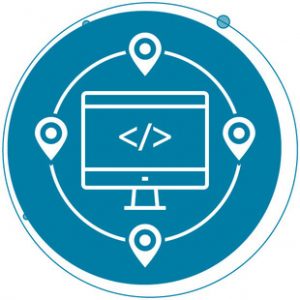
Does your laboratory have multiple scientists who require access to crucial software at the same time? Are some of those scientists only part-time users?
Purchasing separate licenses for each person can be expensive, especially if some of your users only occasionally need access. So just how many software licenses should you purchase? No one wants to pay for something you don’t need, but you also don’t want to hinder your lab’s productivity by limiting access to critical resources. The concurrent software licensing model can help.
Unlike a node-locked license, where the software program and its license are tied to a specific computer, a concurrent license is obtained from a central server. Much like borrowing a book from a public library, when the user starts the software application on their computer, a license is borrowed from the main server over the network. When the user is finished, they close the application, and the license is returned to the server for someone else to use.
The question becomes: How many, and what type of license should you buy? If a workstation controls a mass spectrometer, it must use a node-locked license. But if the software is only used for data processing, then a concurrent license might be a more economical choice. So how many concurrent licenses should you purchase? Because concurrent licenses are checked out and not permanently assigned, it becomes a question of how many user-computer combinations need access to the application concurrently, or at the same time, not in total.
This calculation exercise will help you decide:
- How many power users do you have? A power user is someone who needs access almost every day, and for many hours per day. This might vary from laboratory to laboratory.
In this case, we recommend allocating a license to each of your power users. - How many casual users do you have? A casual user is someone who needs access only part-time. Here, the answer is a little trickier:
- How much time does each casual user need? The optimum number of licenses depends on how many hours per day each casual user needs access. If one person only needs access for a few hours in the morning, and another person typically requires access in the afternoon, then one concurrent license should suffice.
- Are all your casual users within the same facility, or are they located around the world? Users within the same time zone can share access to concurrent licenses as long as they can all access the main server. For example, a user in Italy and another in Norway would be able to share a concurrent license because they are in the same time zone. They would need a shared network that allowed access to the main server.
The concurrent licensing model can be quite economical, particularly for laboratories with multiple casual users. Just a few licenses can provide access for many part-time users. But what happens if you need access to the software while traveling? While a node-locked license would certainly suffice, this can be an expensive solution for part-time users. With the concurrent licensing model, users are allowed to borrow a concurrent license to work offline. Upon return, the license is simply checked back in again. To safeguard against a forgotten license that is checked-out for too long, the license “times out” and is checked back in automatically after 7 days.
Hosting concurrent licenses on a central server has many benefits for IT departments too since set-up and deployment is much easier than deploying multiple node-locked licenses. New licenses can be easily added as your user base grows. For ultimate flexibility, concurrent licenses can be purchased one-by-one so the optimal number of licenses can be achieved for each individual laboratory.
To learn more about concurrent software licensing from SCIEX, and how it can be an efficient and economical solution for your laboratory, read our latest white paper. Or, contact our software sales specialist.






 Contact Support
Contact Support
0 Comments